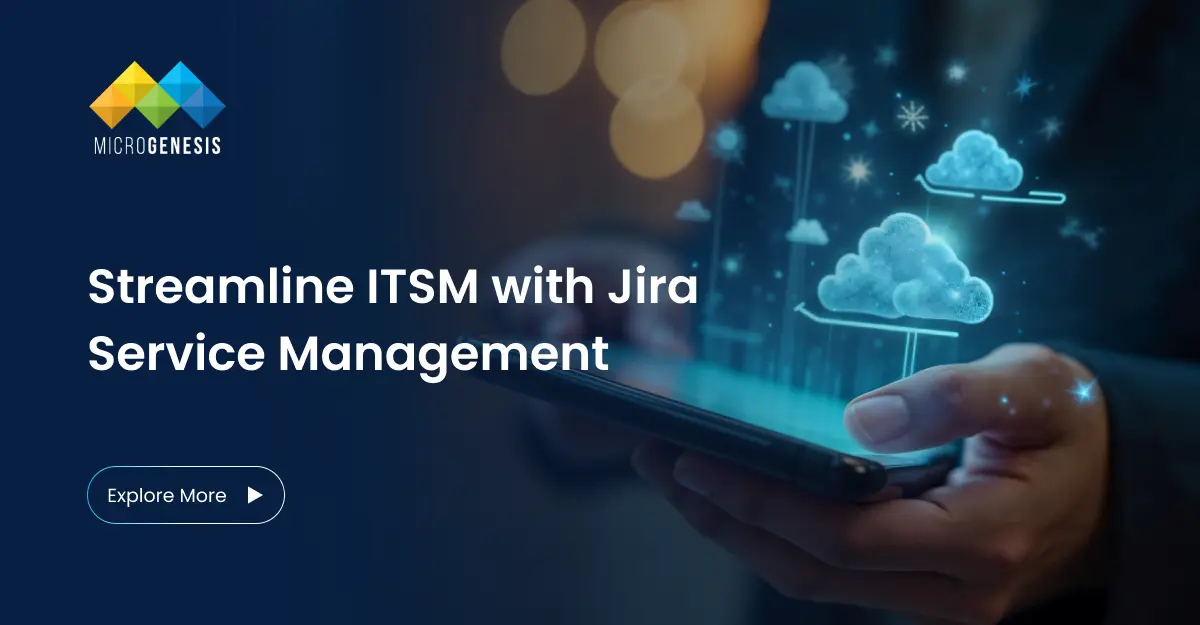In today’s digital-first business landscape, IT service delivery plays a critical role in keeping operations running smoothly. As IT environments become more complex, organizations need reliable, scalable, and integrated tools for managing incidents and service requests. That’s where Jira ITSM, powered by Jira Service Management (JSM), comes in.
Jira Service Management is Atlassian’s flagship platform for IT service management, offering a comprehensive solution for managing service requests, incidents, problems, changes, and more. In this blog, we’ll explore how Jira can streamline your ITSM processes—particularly incident and request management—and help your teams respond faster, reduce downtime, and improve service delivery.
Chapter 1: Why Choose Jira for ITSM?
1. Built on Agile Principles
Jira’s roots in Agile software development make it uniquely suited for flexible and fast-paced IT environments. Jira ITSM encourages iterative improvement, team collaboration, and transparent service delivery.
2. Unified Platform
With Jira Service Management, IT teams can collaborate with Dev, Ops, and business stakeholders using a shared toolset. No more siloed ticketing systems or fragmented workflows.
3. Rapid Setup with ITIL Templates
Out-of-the-box ITIL-based templates for incident, problem, change, and service request processes help organizations adopt industry best practices quickly.
4. Deep Integration Capabilities
Jira integrates with tools like Confluence (for knowledge bases), Opsgenie (for incident response), Bitbucket, Slack, and Microsoft Teams, enabling end-to-end workflow orchestration.
Chapter 2: Incident Management in Jira ITSM
What is Incident Management?
Incident management is the process of identifying, recording, and resolving service disruptions as quickly as possible.
How Jira Helps:
- Users report incidents via a self-service portal, email, or integrations.
- Incidents are categorized and prioritized automatically using forms and automation.
- Agents get instant visibility via queues and dashboards.
- Built-in SLAs help track resolution targets and performance.
- Teams can escalate to Dev or Ops using linked issues in Jira Software.
Best Practices:
- Define clear categories and impact levels.
- Use automation to route incidents to the right team.
- Set up SLAs with timers and alerts.
- Use labels or components for easy filtering and reporting.
- Integrate with Opsgenie for alerting and on-call management.
Example Workflow:
- User submits incident (e.g., “email not working”)
- Ticket is auto-triaged to IT support
- Agent investigates and resolves
- Incident is closed and user receives notification
Chapter 3: Request Management in Jira Service Management
What is Request Management?
Request management covers non-urgent, planned service requests—like access requests, hardware purchases, or help with software.
Key Features in Jira ITSM:
- Customizable request types and forms
- Service catalogs to define available services
- SLA tracking for response and resolution times
- Approval workflows with automated notifications
- Linked Confluence articles for self-service
Read More: How IT Service Management Reduces Downtime and Saves Costs for Growing Businesses
Self-Service Portal:
Users can log in to a branded, intuitive help center and submit service requests. Articles appear based on keywords, reducing ticket volume.
Example Use Cases:
- “Request new laptop”
- “Access to Salesforce”
- “Reset password”
Approvals:
Jira supports multi-step approvals. For example, a software purchase might require approvals from IT, Finance, and a department head.
Automation Rules:
- Auto-assign tickets based on request type
- Notify approvers immediately
- Transition ticket to “In Progress” upon approval
Chapter 4: Optimizing Jira ITSM for Your Organization
1. Tailor Request Types to Business Needs
Don’t use generic forms—customize them for departments like HR, Facilities, Finance, and Legal.
2. Use Queues to Prioritize Work
Create queues based on urgency, requester type, or location. Example: “VIP Incidents” or “New Hire Onboarding Requests.”
3. Leverage SLAs for Performance Tracking
Set clear SLAs and display breach warnings so agents can prioritize high-risk tickets.
4. Integrate with Knowledge Base
Connect Confluence to display help articles before users create tickets, reducing volume.
5. Report on Key Metrics
- Number of incidents vs. requests
- SLA breach rate
- Average time to resolution
- CSAT scores (Customer Satisfaction)
6. Use Asset Management (Jira Assets)
Link tickets to hardware, software, or employee records to improve root cause analysis and accountability.
Chapter 5: Key Benefits of Using Jira for ITSM
1. Faster Resolution Time
Automation and routing reduce manual triage.
2. Improved User Satisfaction
Self-service options and knowledge articles empower users to solve issues independently.
3. Better Visibility for Managers
Dashboards and reports show real-time progress, trends, and bottlenecks.
4. Cost Savings
Automation, self-service, and streamlined workflows lower operational costs.
5. Scalability
Jira ITSM works equally well for startups and large enterprises—you can start small and scale as you grow. With the right IT service management consulting, organizations can tailor Jira Service Management to meet evolving needs while ensuring best practices and long-term success.
Chapter 6: Tips for a Successful Jira ITSM Implementation
- Involve stakeholders early (IT, HR, Security, Facilities)
- Use Jira templates to accelerate rollout
- Train agents and users on portal, SLAs, and approvals
- Start with high-volume requests and incidents, then expand
- Conduct quarterly reviews to improve workflows and reduce clutter
Conclusion
Jira Service Management offers everything modern IT teams need to deliver fast, reliable, and customer-focused service. With flexible workflows, powerful automation, and deep integration with development and operations tools, Jira ITSM is an ideal solution for streamlining both incident and request management.
Whether you’re just getting started or looking to optimize an existing service desk, Jira provides a scalable and user-friendly platform that grows with your business. As a best IT company, MicroGenesis delivers expert ITSM consulting services to help organizations implement, customize, and scale Jira Service Management for long-term success. Our team ensures your ITSM strategy aligns with your business goals—boosting efficiency, responsiveness, and service quality.
Want expert help with Jira ITSM? Reach out to our certified consultants to schedule a discovery call and see how we can tailor JSM to your environment.




